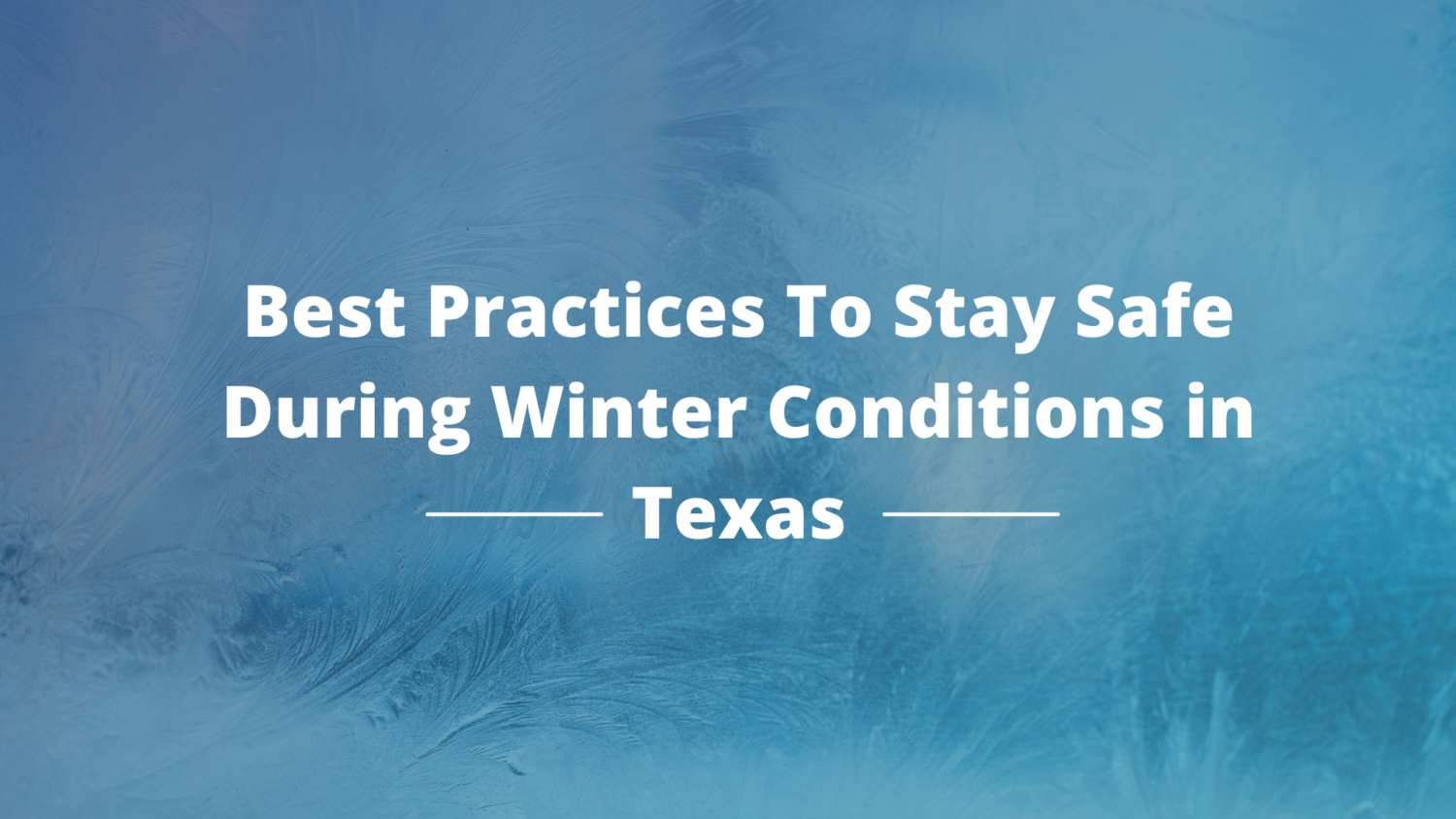
With the frigid temperatures, icy streets, and uncertain weather conditions for the next few days, we at Insgroup have pulled together some resources to help you continue to stay safe.
How to prepare for freezing temperatures
Dallas Ace Hardware has given its residents the following best practices to prepare their homes for frigid temperatures.
- Disconnect all hoses and insulate outdoor faucets
- Add insulation to water pipes
- Close, blinds and cover windows with blankets to keep cold out.
- Open Bathroom and kitchen doors to allow warm air to circulate.
- Leave water dripping and keep the thermostat at 58 degrees.
- When able to travel, be sure to stock up on food and toiletry essentials
- Have an emergency kit with candles, flashlights, water, heaters, and generators.
Energy tips for keeping your home warm:
- Do not use an oven or a gas stovetop to heat your home.
- Protect natural gas meters. Insulate piping and cover ground meters with fertilizer bags.
- Safely remove snow from vents for dryers and other natural gas equipment.
- If you think you smell gas, act fast.
- Leave the area immediately and from a safe distance call 911 and your local energy company:
- Dallas: Atmos Energy emergency number, 866-322-8667
- Houston: Centerpoint Energy emergency number, (800) 752-8036
Safe Driving in Hazardous Conditions
Preparing your vehicle for driving in bad weather
- Remove all snow and ice from your vehicle’s windows, roof, hood, trunk lid, and any other covered areas. This will reduce risk because it increases your visibility. It will also help other drivers around you from being blinded by snow blowing off your vehicle.
- Use an ice scraper to remove snow and ice from your windshield and all windows, including side and rear windows. This will improve your ability to see other roadway users that may move into your path of travel.
- Use your defroster if you do not have an ice-scraper. Take your time and wait for the entire windshield to be clear.
- To optimize visual clarity, clean the outside and inside of your windshield at least once a week. Frequent cleaning is even more important if you smoke.
- Make sure your windshield wiper blades are fresh. Many drivers change them every six months, especially before driving in bad weather.
RELATED: Why is my tire pressure low?
On the road
- Turn your headlights on. In fact, it is a good idea to turn on your headlights any time you drive, because you will increase your visibility in any conditions.
- Slow down driving and leave plenty of room to stop. You should allow at least three times more space than usual between you and the vehicle in front of you.
- Brake gently to avoid skidding and losing control of your vehicle.
- Do not use cruise control on any wet, snow-covered, or icy roads.
- Be aware of possible icy roads. Be extra careful on bridges and overpasses, which will freeze sooner than roads. Even with temperatures above freezing, if conditions are wet, you might encounter ice in shady areas or on exposed roadways.
- Be careful on infrequently traveled roads, which may not be cleared as often as other roads.
Leaving the road
- If you must get off the road, try to wait for conditions to improve and pull off the road as far as you can, preferably past the end of a guardrail.
- It is best to pull into a rest area or parking lot, rather than on the shoulder.
When to brake and when to steer
- Some driving situations require abrupt action to avoid a crash or collision and in winter conditions the decision to steer or brake can have very different outcomes. When traveling more than 25 mph, it’s recommended to steer over braking to avoid a collision in winter-like conditions, as less distance is required to steer around an object than to brake to a stop. In slick conditions, sudden braking can lead to loss of vehicle control.
- Sometimes steering is not an option. Braking on slippery surfaces requires you to look further ahead and increase following and stopping distances. Plan stopping distances as early as possible and always look 20-30 seconds ahead of your vehicle to ensure you have time and space to stop safely.
Stay in control through a skid
- Even careful and experienced drivers can skid on slippery roads. When a vehicle begins to skid, it’s important not to panic and follow these basic steps:
- Continue to look and steer in the direction you want the car to go.
- Avoid slamming on the brakes as this will further upset the vehicle’s balance and make it harder to control.
Additional winter driving safety tips
- Use your seatbelt every time you get in the vehicle.
- Never warm up a vehicle in an enclosed area, such as a garage.
- Make sure the exhaust pipe isn’t clogged with snow, ice, or mud. A blocked exhaust could cause deadly carbon monoxide gas to leak into the passenger compartment with the engine running.
- Never leave your vehicle unattended with the engine running.
- Keep your gas tank at least half full to avoid gas line freeze-up.
